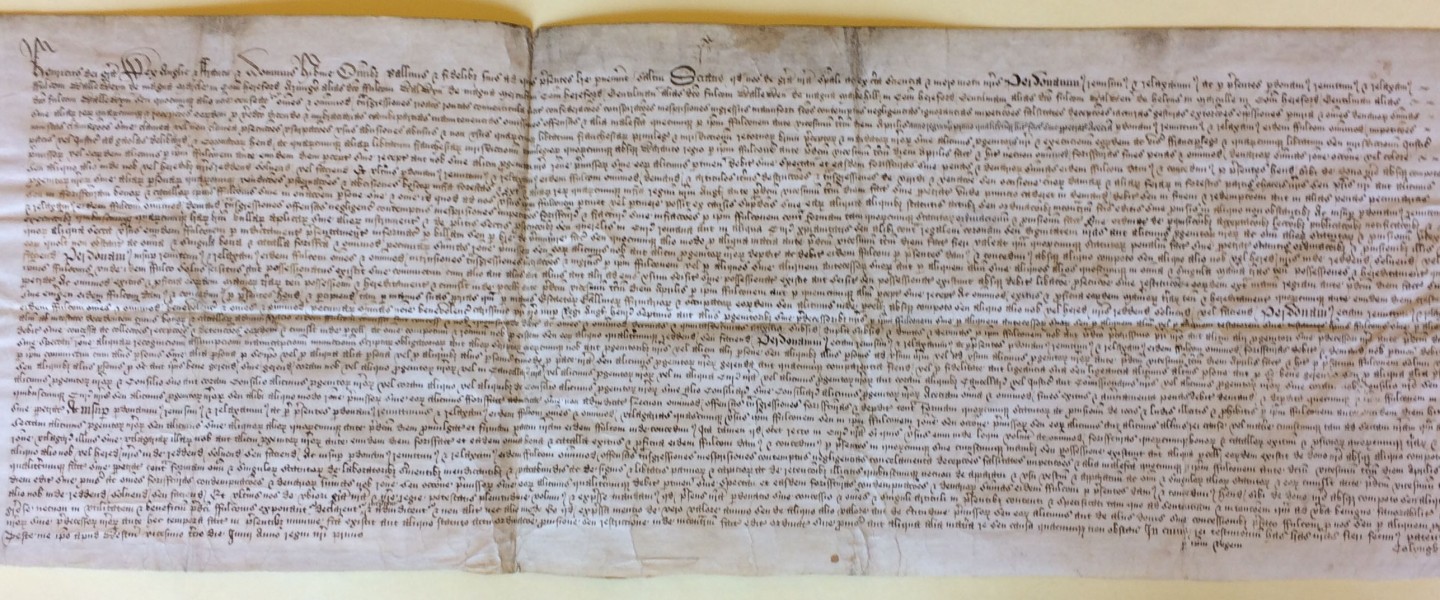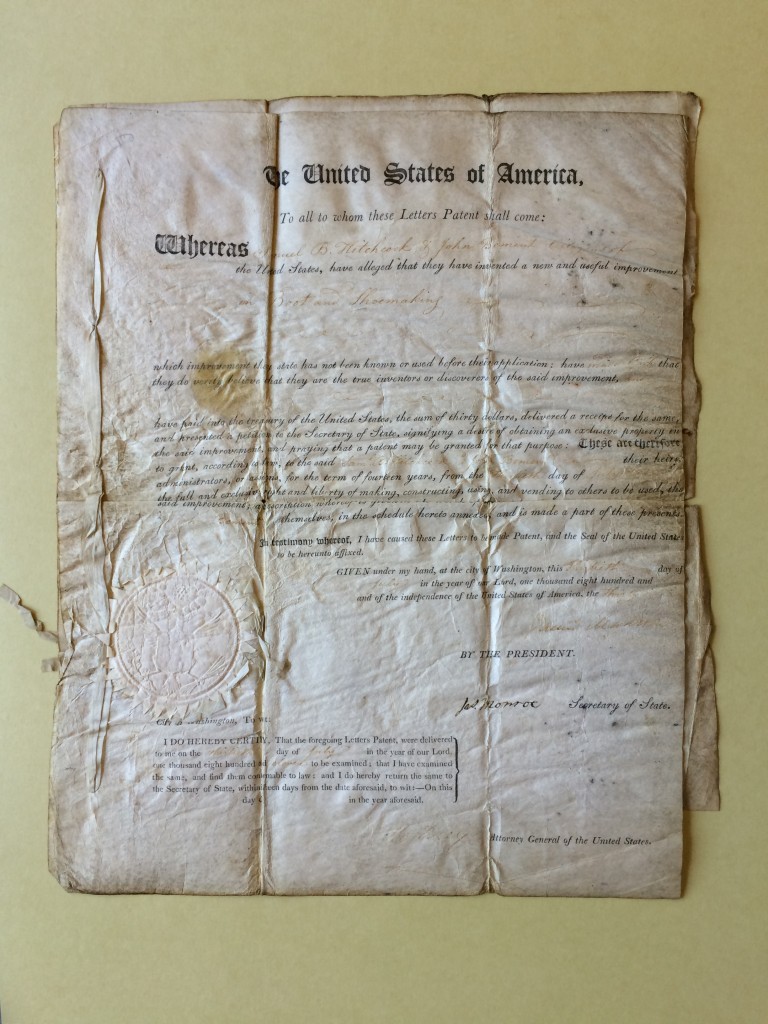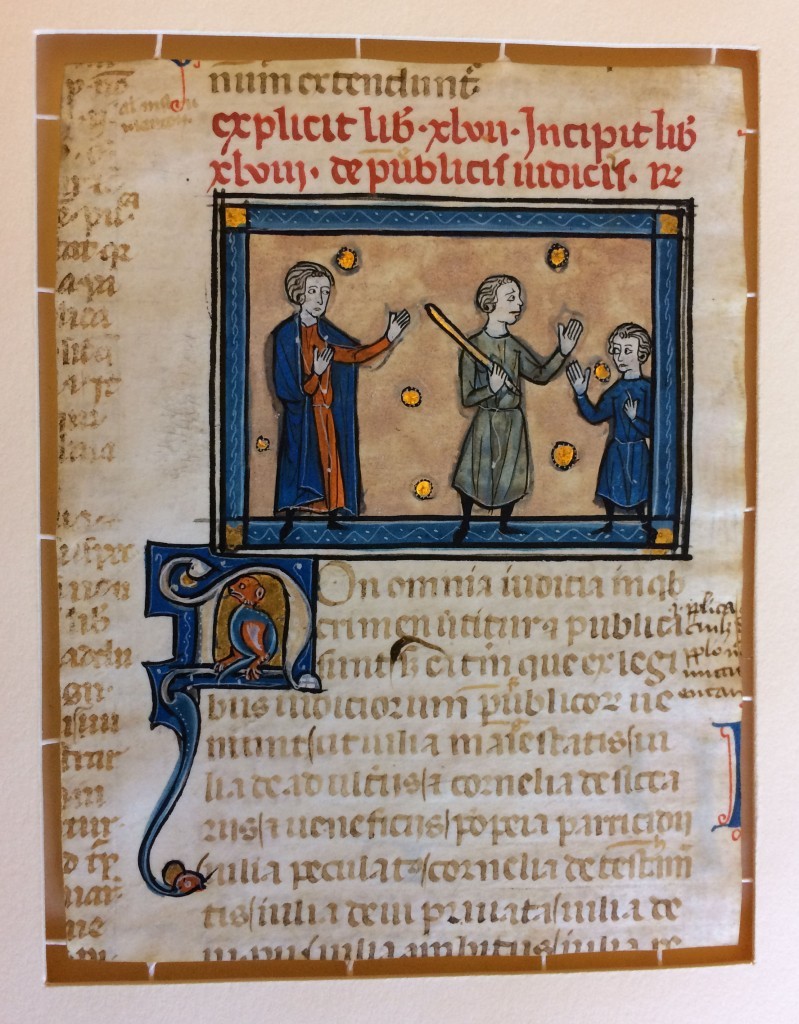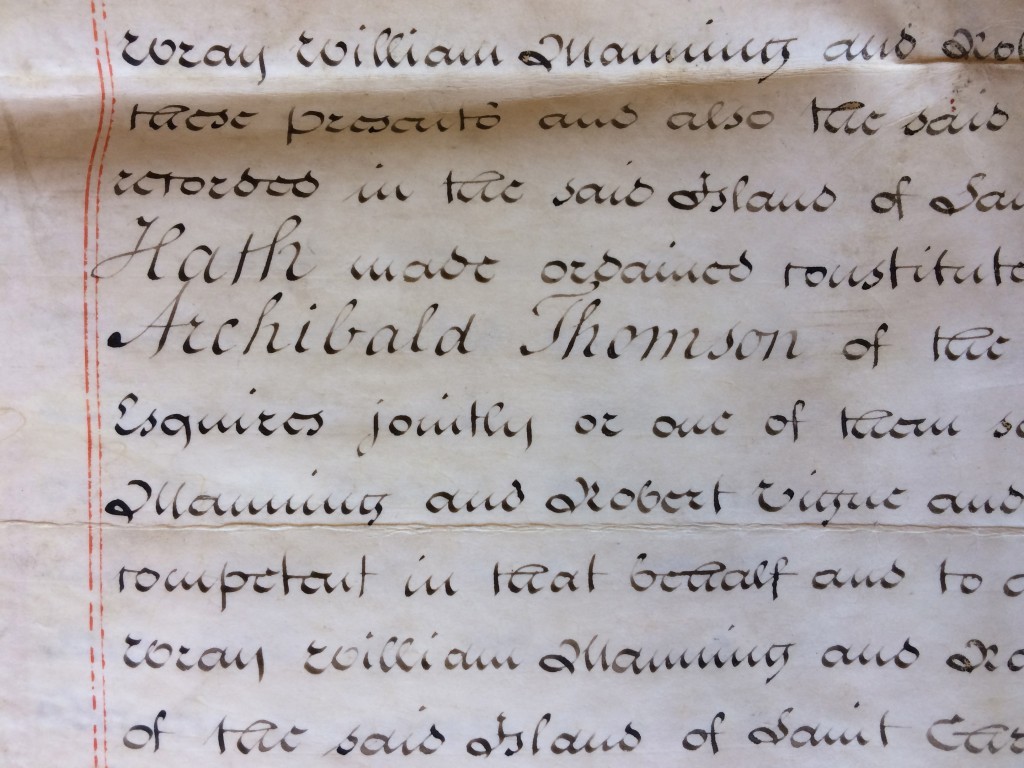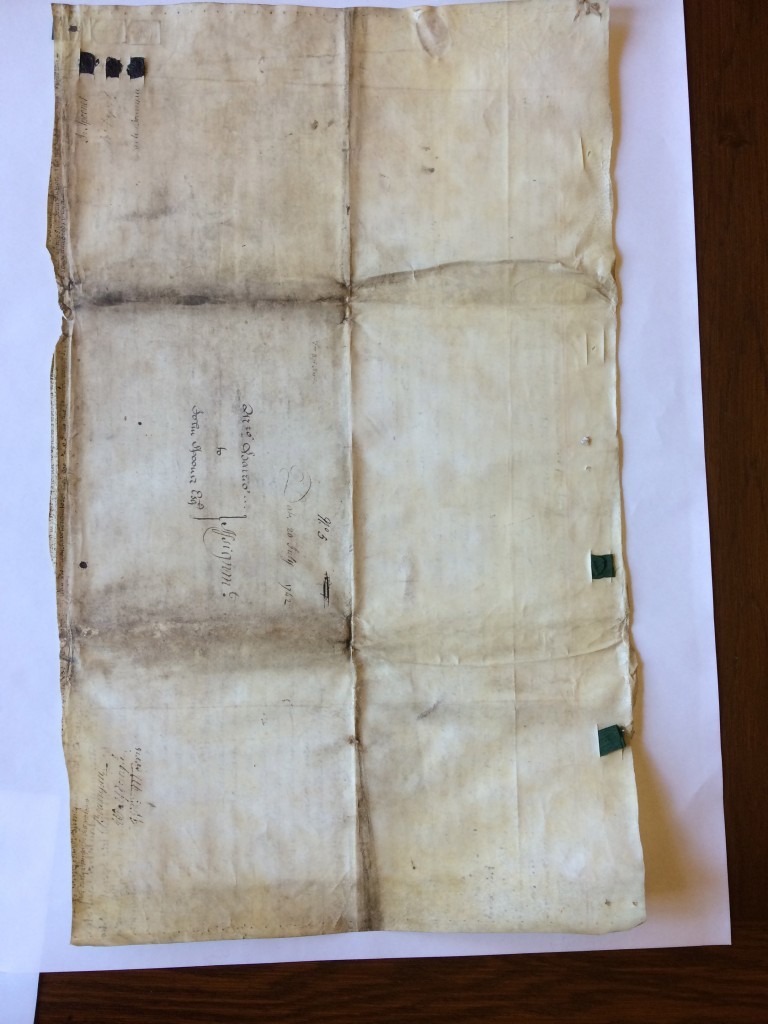Ever wondered from what animal your parchment came? Researchers at the University of York in the UK want to know. They started the Books & Beasts project, which is a study to identify the animal origin used to produce a parchment document. It involves a minimally invasive method for sampling; white vinyl erasers (the type used in conservation to surface clean dirty documents) are gently rubbed against the parchment. The eraser crumbs are gathered in vials and sent to the University of York. The samples are analyzed through protein mass spectrometry (MALDI-TOF) of the collagen molecules extracted from eraser waste. Other participating institutions include Yale, the New York Public Library, Harvard, and MIT.
After hearing about this project, I approached administration and was pleased that they shared my opinion that the risks to the objects were few, participation in the project would complement the collection, and that the time and monetary costs dedicated to the project would be acceptable.
Sarah Fiddyment and Matthew Collins at the University of York were enthusiastic about Northwestern’s possible participation, especially as we have documents from the West Indies that might yield some interesting results. They sent some information about the project and a kit with 72 tiny vials for samples. They explained that if a single leaf is being studied, only one sample is needed, however if a book or multi-page item is studied three samples are typically taken, more if the parchment is not visually similar throughout. A log of item identification information (date, country of creation, etc.) of each document is kept for each sample.
The University of York’s website has posted updates and information about the process: Getting Under the Skin of a Medieval Mystery and a Vellum Gallery.
Sigrid Perry of Special Collections worked with us to identify 53 objects to be sampled as part of this project. These materials included several New World documents, which are less represented in the study. Collection of each sample, recording the needed information and photographically documenting the location of the sample took about 15 minutes per item. Several members of the Preservation Working Group participated in the project including Katie Risseeuw, Basia Stanek, Scott Devine, Ann Duncan-Gibbs, Patti Swanson, Carlynne Robinson, and Tonia Grafakos.
While collecting little bits of eraser crumbs only sounds fun to conservators, having a chance to dig through the parchment collection materials could give anyone that materialist thrill of history. All are available in the Charles Deering McCormick Library of Special Collections.
Although it took a while to collect the samples and record all of the information, the only monetary cost for this project was mailing the samples back to England. We should get the results back during the late fall. The skins sampled are likely to be calf, goat and sheep, but could reveal intriguing patterns of animal selection and skin preparation.
An in-depth article published in the Proceedings of the National Academy of Sciences of the United States of America by Sarah Fiddyment, Matthew Collins, and may others, provides more information about analyzing and identifying vellum through this testing: “Animal Origin of 13th-century uterine vellum revealed using noninvasive peptide fingerprinting.” Find it here.
Past posts from the Preservation Department can be found by visiting Beyond the Book. Check back here for all future posts and updates!

